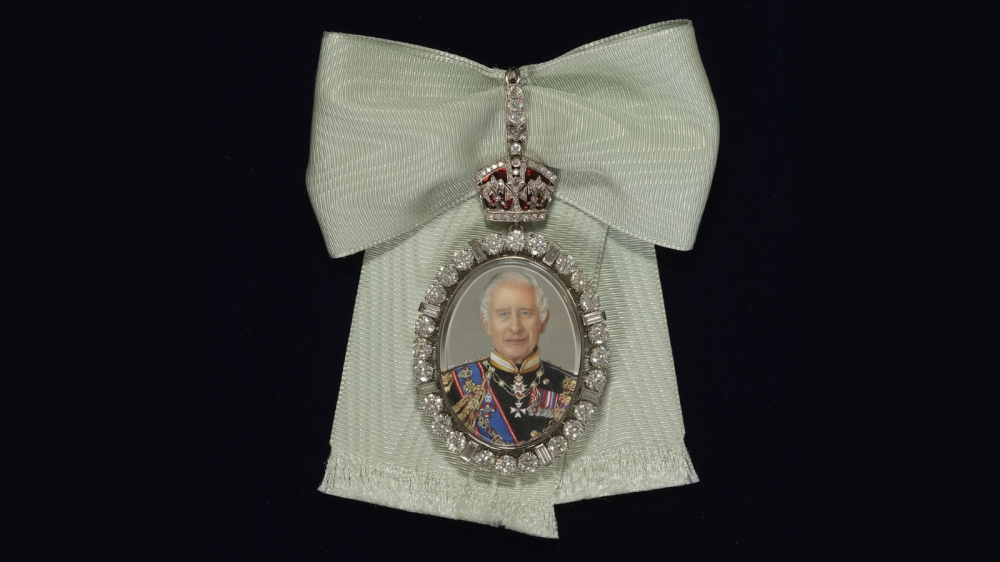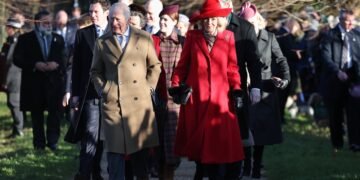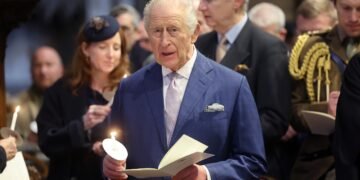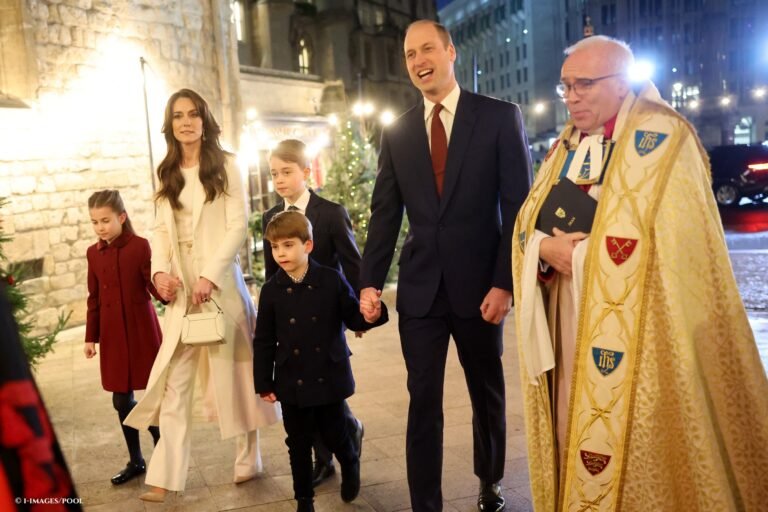Royal Family Orders are a traditional honour bestowed upon female members of the Royal Family, with every Monarch since George IV having their own. In recent months, the newest version – the Royal Family Order of Charles III – has been seen, so we take a look at its history and what it means.
What is a Royal Family Order?
A Royal Family Order is bestowed upon female members of the Royal Family as a personal gift from the Sovereign, in recognition of their work to support the Monarchy.
The insignia of the order is comprised of a miniature portrait of the Monarch gifting the order, attached to a silk ribbon bow, with each Monarch distinguishing their order through a different colour ribbon.
It is gifted to female members of the Royal Family as a personal gift from the Sovereign, in recognition of their work to support the Monarchy.
What does Charles III’s order look like?
The Order of Charles III depicts a miniature of His Majesty in uniform and wearing his honours and medals. In this particular portrait, The King is wearing ceremonial day uniform of the Royal Navy Admiral of the Fleet with the collar of the Order of the Garter, the Royal Victorian Chain, the riband of the Royal Victorian Order, the badges of the Order of the Bath and Order of Merit and his military medals.
The miniature was painted by Elizabeth Meek based on a photograph by Hugo Burnand that was taken in 2023 at Windsor Castle. The photographic portrait was created to hang in public buildings across the UK.

Previous Royal Family Orders have been painted on ivory; however, in breaking with tradition, Charles opted to have his Family Order painted on polymin, a specialist artists’ medium that is used as an alternative to synthetic ivory, which has become increasingly hard to source.
This isn’t the first time ivory has been eschewed: when The Princess of Wales was bestowed with Elizabeth II’s Royal Family Order in 2017, the late Monarch decided against the animal product to reflect a more modern view of the material, and opted for glass instead.
Charles’ miniature painting is surrounded by 10.41 carat diamonds, both brilliants and baguette cuts, sourced from the Royal Collection; it is mounted on a white and yellow gold frame and hung from a gold and enamel Tudor Crown – the standard format for an Order. The enamelwork of the Order was crafted by Fiona Rae, a jeweller who began her business with a loan from the Prince’s Trust.

The reverse of the miniature depicts His Majesty’s cypher in gold, with goldwork engineered by Seth Kennedy, a scholar from the Queen Elizabeth Scholarship Trust.
The silk ribbon is pale blue, formed into a bow, and is made by Philip Treacy, a favoured milliner of The Queen’s. George V also used a pale blue ribbon, while Elizabeth II’s was yellow and George VI’s pink.
When are Royal Family orders worn?
These orders are often worn at state occasions and formal events, usually white tie events such as State Banquets. The wearing of such insignia (the miniature) shows their close connection to the Monarch.
In June 2024, Camilla debuted the first Royal Family Order of Charles III at the Japanese State Banquet, continuing centuries worth of tradition.
She was the only member of the Royal Family to wear the insignia, with it being pinned to the dress of the recipient on the left shoulder, meaning – at that time – no other royal women had been bestowed with the gift.

Over time, more female members of the Royal Family will likely wear the honour.







